Project management is constantly evolving in its technology and trends, from RACI to Gantt and back. It’s no wonder that sometimes it feels like a Pandora’s box of different decision makers, project roles, and responsibilities. This is particularly true if you don’t have a project plan and the structures in place to complete the task milestones from start to finish while managing the responsible parties involved.
Without this, it’s pretty easy for the right hand to be in the dark about what the left hand is doing. One steadfast method involves the use of something called a RACI chart. In this blog, we’ll cover what the RACI model is, why it’s important for a healthy project management environment, and how to implement it the right way.
What does RACI mean?
The acronym RACI stands for responsible, accountable, consulted, and informed. This is how each of the 4 components is defined:
- Responsible: a manager or team member who is directly responsible for successfully completing a project task.
- Accountable: the person with final authority over the successful completion of the specific task or deliverable.
- Consulted: someone with unique insights the team will consult.
- Informed: a client or executive who isn’t directly involved, but you should keep up to speed.
There are other variations of this method. RACI is the base level, the vanilla ice cream of responsibility matrices. Other versions add their own unique flavors — peanut butter, cookies, and more. RASCI, for example adds the 5th level, support, to the matrix. This could look like a senior developer who works on another project but also has unique experience working with APIs.
What is RACI in project management?
Also called a RACI matrix, RACI charts are a type of responsibility assignment matrices in project management. These simple spreadsheets or tables highlight the different states of responsibility a stakeholder has over a particular task or deliverable and denotes it with the letters R, A, C, or I. It’s typically implemented by color-coding each responsibility level and creating a simple table layout.
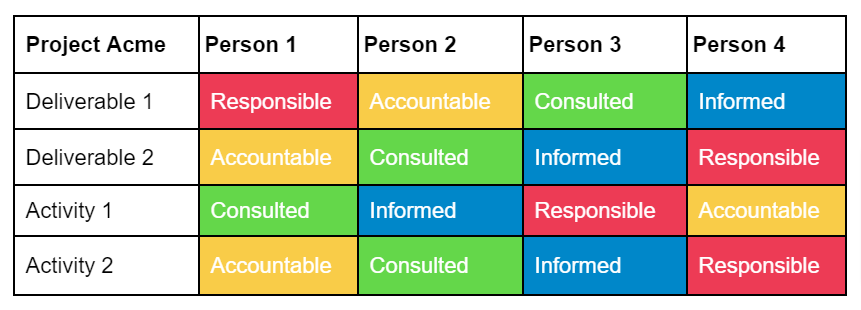
Generally, nobody should have more than a single responsibility level for each deliverable or activity group in the RACI chart. In this example, we’ve given every person some level of involvement to keep things simple. But when you make a real model for more than four people, there’s often more white space. We will get more into how class RACI looks and functions later.
Why do you need a RACI?
The goal of the RACI model is to bring structure and clarity regarding the roles that stakeholders play within a project. This responsibility assignment matrix instills confidence in each responsible person because they know what they are doing— this type of stakeholder engagement is crucial, according to a 2020 study by Wellingtone. In fact, it was ranked as the highest-valued project management process.
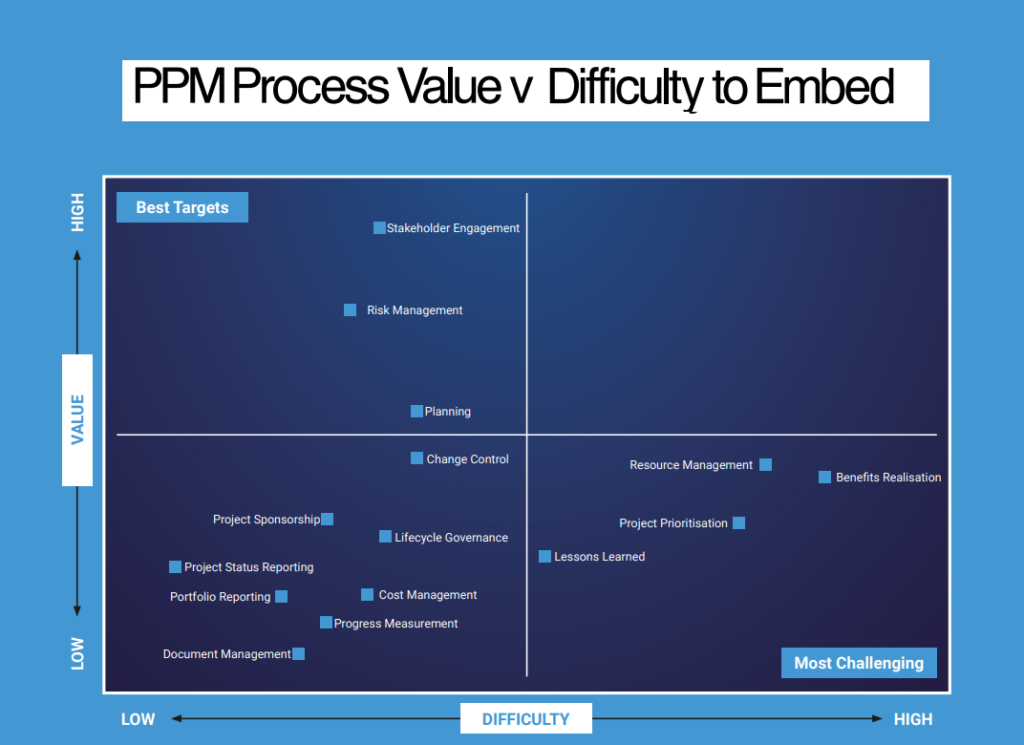
RACI provides a concrete and intentional framework to manage all relationships appropriately, from start to finish. A large scale project could involve many stakeholders, like:
- Government regulators
- VIP clients and project sponsors
- Company executives
- Business analysts
- Internal users of the product
- Customers
- Suppliers
- Investors
Mapping all of their responsibilities out from the beginning and sharing them is an excellent way to avoid miscalculations and blunders that could cost you precious time and money. And of course, it will contribute to your overall stakeholder engagement efforts.
Research-backed tips for effective stakeholder engagement
Before we get into the technical components of creating a RACI chart, let’s dive into stakeholder engagement briefly. A recent McKinsey study highlighted three key areas for engaging external stakeholders effectively — a corporate purpose, active use of technology, and organizational agility.
How can you apply this research? Check out these tips.
1. Map out deliverables and activity groups thoroughly before using RACI
Don’t jump immediately into assigning individual responsibilities. Start by consulting with subject matter experts and accurately mapping out the moving parts. Only once you’ve got a clear outline of your project can you make educated decisions. That could be your Work Breakdown Structure (WBS) or a project roadmap.
2. Don’t be afraid to give responsibility to less senior staff
Assigning the accountable role to a high-level executive or project manager for all tasks is a mistake. Since they have the final say on when a job is complete, you instantly create a bottleneck. Instead, don’t be afraid to assign that role to experienced staff on the project team itself, who is most familiar with the work.
3. Standardize the approach across departments and locations
While a single project team is good, stakeholder relationships don’t exist in a vacuum. Your whole organization must get on board to truly maximize the return on investment. Make distributed responsibility and decision-making part of your corporate purpose. Everyone — from executive to intern — must be on the same page.
4. Use the right digital tools to implement RACI at scale
A written memo isn’t enough to standardize your methods and remove departmental silos. Use digital tools to build a platform for efficient RACI implementation and stakeholder management.
Who uses a RACI matrix?
Even though the RACI model is a project manager’s useful tool for stakeholder management, that doesn’t mean it should be used for all projects. The deciding factors on who uses it relate to the scale of the project and the company structure.
Use the RACI matrix for projects that are:
- Large-scale with clear-cut deliverables or workgroups
- For organizations with static roles and responsibilities
- Involving a wide variety of stakeholders for different aspects
- Spanning multiple departments
- In highly regulated industries
Don’t use the RACI matrix for:
- Small, single-department projects — it’s likely not necessary
- Teams working with an Agile framework like Scrum
In Agile organizations, cross-functional teams and collaboration is the default. So task responsibility depends on the employees’ initiative rather than a top-down decision. For Agile teams, implementing a hard version of RACI will likely not be helpful, as teams should be self-organizing.
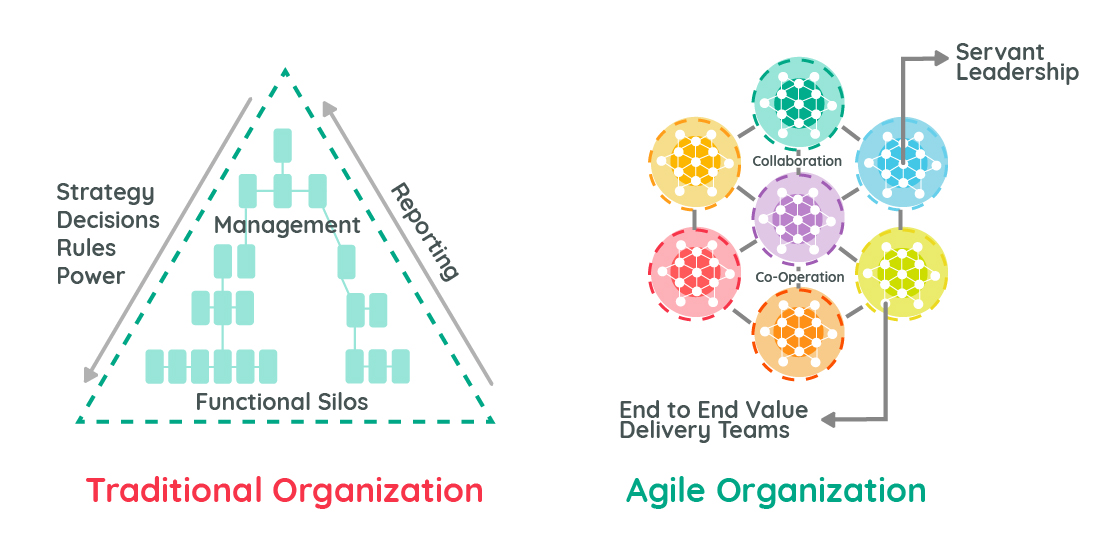
What should a RACI include? RACI model guidelines
RACI has a set of general guidelines to help you implement the method successfully:
- Only 1 accountable per task or deliverable.
- Only 1 responsibility type per person. If you don’t follow this, the RACI matrix will be more confusing than helpful.
- The accountable person needs to have the authority to help finish the task.
- Only the responsible and accountable roles are mandatory for every task. Not every task is complex enough to need outside input or warrant informing anyone else.
- Prioritize effective communication with the consulting person.
- Always keep all stakeholders informed. Even the lowest level needs to know about updates and changes to the project.
How to create a RACI chart with monday.com
While there is a wide variety of project management apps out there, in the particular case of a RACI, monday.com project management provides an outstanding offering of robust integrations and extensibility that allow you to build the exact platform you need to manage this structure and more.
You can get started much quicker with our RACI matrix template and share it with the entire team. Keep track of the RACI roles for all project activities and easily see project phases and individual deliverables for each.
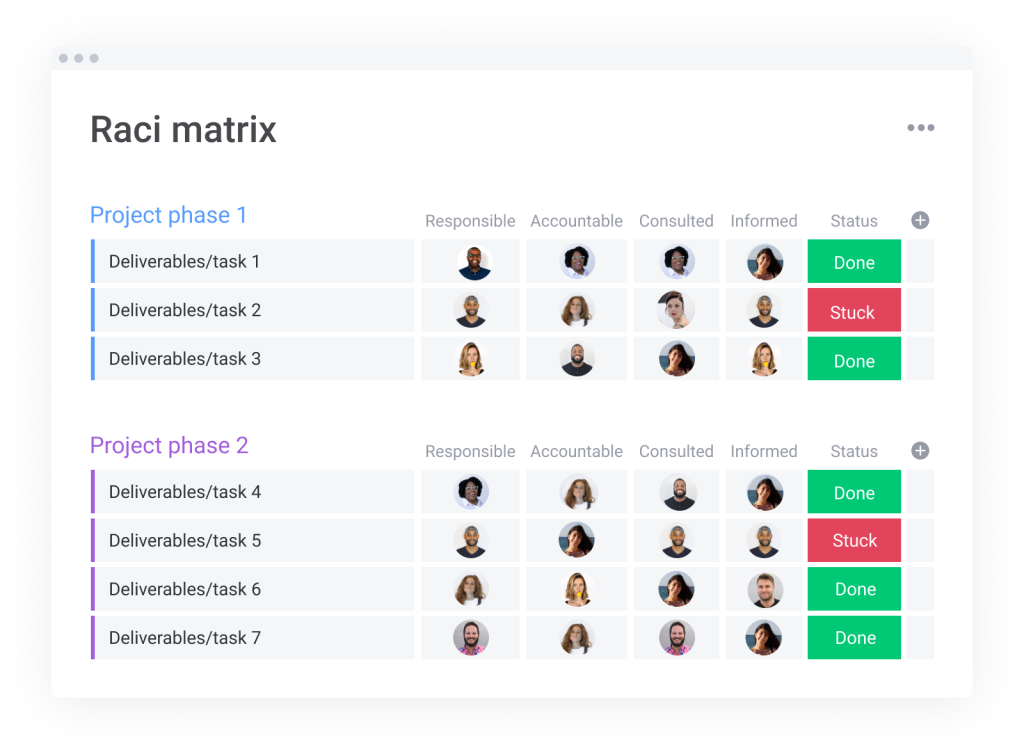
In addition to customizations on columns, statuses, and more, easily assign roles to internal users or guest users created for external stakeholders. All assigned roles will automatically get informed of status changes to the work item.
Here are a few more ways you can get the most out of your RACI matrix.
Continually update and revise to reflect the real-time statuses
An out-of-date RACI diagram helps nobody. Use board permissions to let responsible users directly edit the status of the row themselves.
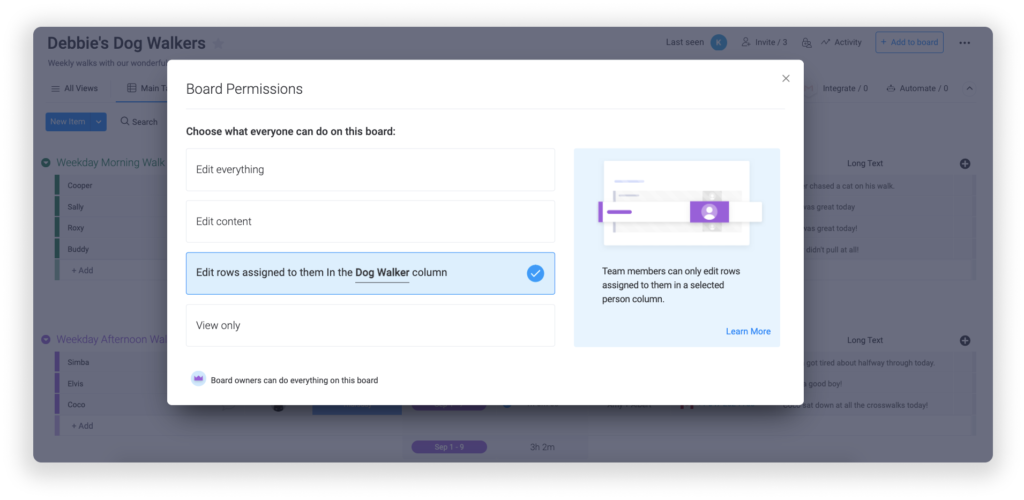
Keep stakeholders involved with shared boards and dashboards
With monday.com, you can easily give them viewer access to project and workflow boards. That way, they know the actual status of the project in real-time. They can then use that information to guide their decisions. You can also inform stakeholders of crucial changes automatically with automations.
Our integrations with Slack, Microsoft Teams, and Gmail let you send messages based on status changes, new items, missed due dates, and more.
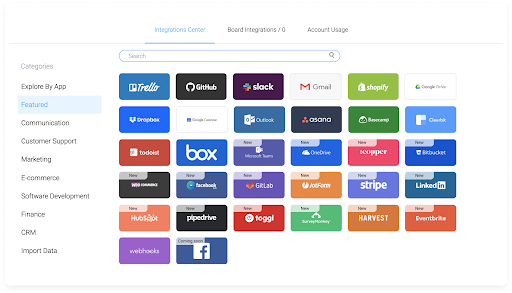
Remove data silos to keep everyone on the same page
Naturally, every department uses a different set of tools and applications. monday.com’s robust integrations make it easy to bring all of this data And even if you use custom business apps, you can easily integrate them into monday.com using our API and 50+ pre-built adaptors.
RAPID vs.RACI— What’s the difference?
Sometimes when you want to define RACI, it’s important to use another method for comparison.
RAPID and RACI are both two important tools for project managers, but they have different functions. As we have seen, the RACI method revolves around deliverables and the key person responsible throughout each stage of the process. RAPID however, focuses primarily on the decision-making process and the actions made by an organization.
You can see the breakdown of RAPID here:
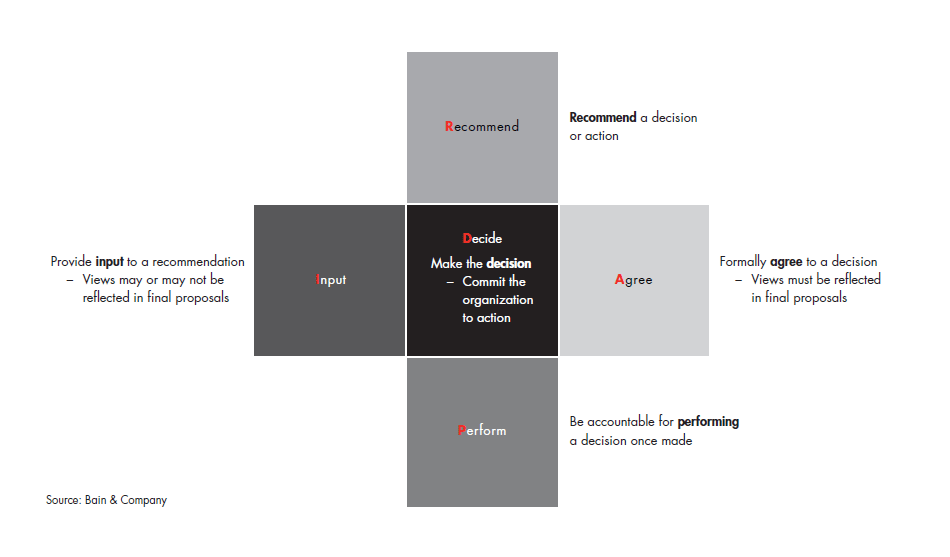
While making a key decision is a part of the project management process, it’s not the whole journey. The RACI framework outlines who should do a task, who to keep in the loop, and who gets the final say.
Empower stakeholders and don’t miss a beat with monday.com RACI charts
The RACI matrix is an excellent method for assigning responsibilities and keeping stakeholders engaged throughout the journey because it clarifies where everyone should focus their energy and makes it easy for people to lead the way in their area of expertise.
That being said, the platform and tools you use to make it automated and up to date can have a significant impact on its success. Use our RACI template and share it with your entire team to ensure everyone understands and deals with it accordingly.
Don’t miss more quality content!

